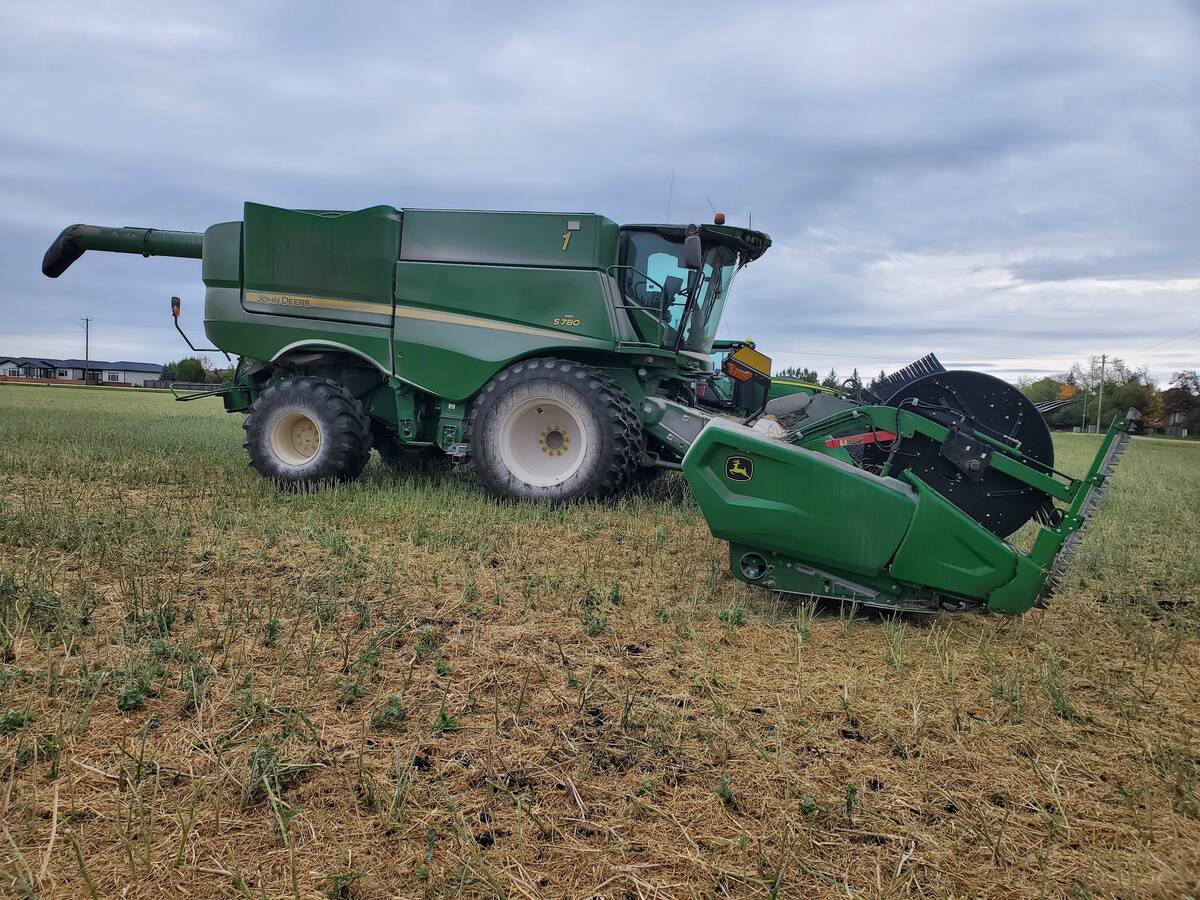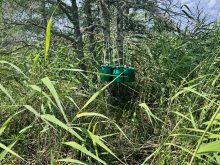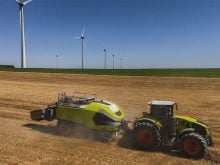BRANDON – Carol and Garry Kaplars’ farming future hung on the prices
their cattle brought at auction July 19, 750 kilometres from home.
When the bidding started, “our hearts kind of stopped,” said Carol.
The Kaplars and son, Garry Jr., with the help of some neighbours,
loaded the family’s 247 cow-calf pairs into seven tractor trailers one
evening last week. The family followed the trucks through the cool of
the night from Livelong in northwestern Saskatchewan to Brandon.
“It really is our only hope. We have to get more money than is being
Read Also

Powdery mildew can be combine fire risk
Dust from powdery mildew can cause fires in combines.
paid in the sale rings near home,” said Garry Sr., on herd dispersal
sale day, outside the Heartland Livestock auction facility.
The family expected their commercial herd of mainly Charolais cross
cows and calves would not bring enough if they sold them in the
drought-parched Saskatchewan and Alberta markets.
Carol speculated that if the prices were too poor the couple, in their
early 50s, might not be able to continue farming.
“If (the pairs) only bring $1,000 or so, I don’t know how we’d be able
to start over. We’ve still got to pay the bank … only a couple more
years and we’d have owned them all.”
Two years of dry conditions followed by two years of extreme drought
left the 3,500 acre Kaplar farm unable to support 260 cows and their
calves.
“We did all we could at home,” said Garry Sr. “Carol and I fenced five
more quarters last year … it just isn’t enough. If it doesn’t rain,
it doesn’t matter how much land you’ve got.”
A move from grain into more cattle and prudent management decisions to
keep a stock of hay and feed grains meant the couple has not qualified
for government farm income programs.
“By the time we qualify for aid and get it, our cattle will have
starved,” said Garry.
“Before (the cattle) started to suffer, we decided we had to sell.
Thirty years to build a good, strong herd and two years to be forced
into selling it all.”
His words were tough but his eyes turned moist.
“It’s just damn hard to sell. But we can’t keep them. There’s just
nothing for them to eat back home. But if the price is no good here,
I’ll make other arrangements. Pasture in Manitoba on shares. We’ll stop
the sale. These aren’t cull cattle. This is our herd. Damn good cattle.
They deserve to bring a fair price,” he said.
Tens of thousands of cow-calf pairs that would not normally be on the
market are being sold in Alberta and western Saskatchewan. So many
cattle have moved into the auctions and slaughter facilities that
prices have fallen by one third or more from last fall. Calves are
being weaned early; viable cows are being sold for meat.
Garry Kaplar phoned order buyers and auctioneers in the three prairie
provinces. For three years Alberta and Saskatchewan ranchers have been
shipping cattle to Manitoba for the summer season because rain had
improved pastures and hayland there.
A decision was made two weeks ago to ship the Kaplar herd to Manitoba.
But these cattle would not be coming back.
“Just because you’re having a dispersal doesn’t mean you have to have
it near home,” said Garry.
Better prices
The Kaplars decided that even with the $20,000 it cost to round up
their herd and ship it out, it would still earn more in Manitoba than
in Alberta.
For two hours before the sale, in the hallways of the auction market,
the couple repeated their story to farmer after farmer who had come to
bid. Garry spoke clearly, with energy but without emotion.
“They’re a great bunch of cattle. And if you’re not satisfied after you
buy them, next year I’ll buy them back from you. I’ll give you what you
paid or better,” he told his Manitoba colleagues.
Farmers arrived at the sale from across Manitoba and eastern
Saskatchewan. They filled the Heartland ring’s seating area despite the
mid 30 degree temperatures outside and in.
When the fourth pen of cows and calves were sold, and the price
appeared to be steady and holding, Garry realized the gamble had paid
off. Carol recorded each sale in a manner that expressed the mixed
blessing that it was.
The prices were strong, averaging $1,350 per pair with a high of $1,510.
“Manitoba has delivered us a good sale,” said Garry at the end of the
sale. “Heartland and the farmers out here treated us right. We’re going
to make it. We’re going to make it.”
















